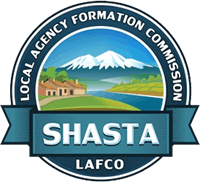Frequently Asked Questions
What are LAFCOs?
LAFCO stands for Local Agency Formation Commission. LAFCOs were created by the California Legislature in 1963 with regulatory and planning responsibilities to coordinate the timely development of local governmental agencies and their services while protecting agricultural and open-space resources. Most notably, this includes managing boundary lines by approving or disapproving proposals involving the formation, expansion, or dissolution of cities and special districts.
LAFCOs also conduct studies to help perform their regulatory duties. This includes preparing municipal service reviews to evaluate the level and range of governmental services provided in the affected region in anticipation of establishing and updating cities and special districts’ spheres of influence. Spheres of influence designate the territory LAFCOs believe represent the affected agencies’ appropriate future jurisdictions and service areas and must be reviewed every five years. All boundary changes, such as annexations, must be consistent with the affected agencies’ spheres of influence with very limited exceptions.
Are LAFCOs independent agencies?
Yes. LAFCOs are independent political subdivisions of the State of California tasked with administering a section of Government Code (Section 56000, et seq.) known as the Cortese-Knox-Hertzberg Local Government Reorganization Act. Please see the CKH Guide 2023 for further information.
Do LAFCOs consider local conditions in each county?
Yes. Each LAFCO is responsible for fulfilling its regulatory responsibilities outlined under the Cortese-Knox-Hertzberg Local Government Reorganization Act consistent with its own adopted procedures and policies. Accordingly, a proposal may be appropriate in one county but not appropriate in another county based on local conditions and circumstances.
Who pays for LAFCOs?
State law establishes the formula in terms of funding LAFCOs. Any local agency who is eligible to have representation on the Commission must contribute funds to their LAFCO’s budget. At Shasta LAFCO, the County of Shasta pays for one-third of our budget; the three incorporated cities (Anderson, City of Shasta Lake and Redding) pay for one-third; and thirty-two Independent Special Districts pay the remaining one-third. For the cities and special districts, their portions vary from year to year based on their revenue reported to the State Controller.
Does LAFCO charge a fee to process jurisdictional boundary changes?
Yes. Our current fee schedule and fee policy can be found here. All proposals are charged the actual cost of processing the requested action.
What are special districts?
Special districts serve important roles in California given that they are responsible for providing a range of municipal services like water, sewer or fire – within particular areas, such as unincorporated communities. Special districts fall into two categories, (a) independent and (b) dependent. Independent special districts have a board of directors elected by the voters that reside within their boundaries. Dependent special districts have a board of directors appointed by other local agencies or whose board members are the board of supervisors or one of the city councils.
Do LAFCOs oversee school districts?
No. School districts fall under their own section of State law. LAFCOs do not oversee school districts in any way, although proposals for new school sites that will require the extension of municipal services to unincorporated areas are reviewed by LAFCOs.
How does SB 1266 Enactment affect LAFCO?
Shasta LAFCO does not have JPA (Joint Powers Authority) regulatory and review authority under the provisions of SB 1266 Enactment. Shasta LAFCOs role will be to serve as a depository for associated filings. Please see the SB 1266 Enactment for further information .
Are LAFCOs subject to the Brown Act and the Political Reform Act?
Yes. LAFCOs’ members are subject to the same laws and restrictions that apply to all locally elected officials with respect to ensuring all actions are taken openly with full disclosure to the public as well as filing annual Statement of Economic Interests forms.
Are LAFCOs required to comply with CEQA?
Yes, LAFCO must comply with the California Environmental Quality Act (CEQA) when acting on boundary change proposals.
How long does it take to process a proposal?
At Shasta LAFCO, as a general rule, proposals are processed and presented to Commissioners for consideration within three to five months from the time they are submitted. If approved, it generally takes an additional two to three months to complete the necessary paperwork before a proposal is officially recorded.
When and where does the LAFCO Commission meet?
Shasta LAFCO meets at 9:00 a.m. on the first Thursday of every other month, typically during the months of February, April, June, August, October and December. Special meetings are called as necessary. Meeting locations rotate between a variety of public meeting areas such as Redding City Council Chambers, Shasta County Board of Supervisors Chambers, Anderson City Council Chambers and City of Shasta Lake Council Chambers. Our next meeting date and location can always be found on our Meeting Schedule page.
Who are the members of LAFCO?
Our current Commission Roster can be found here.

0 comments